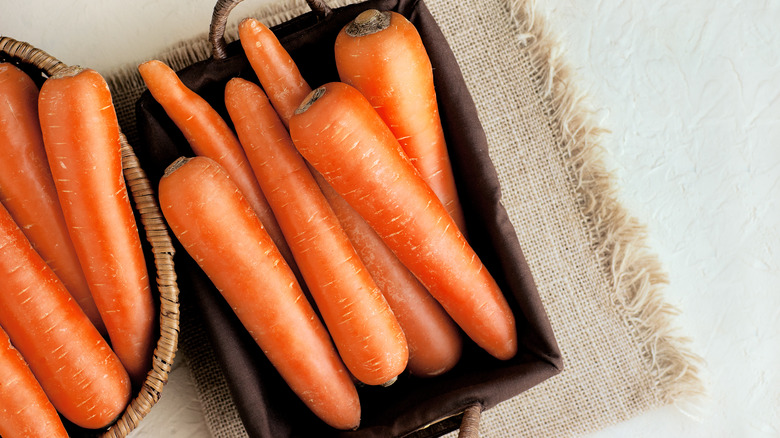The Simple Trick That Will Make Your Carrots Brand New Again
It's often useful to have a bunch of carrots hanging out in the back of your fridge. You can make them the star of a dish such as carrot parsnip soup, or add them as a handy ingredient to something else. But if you forget to use them for too long, you may end up with a vegetable that's limp, rubbery, and wholly unappetizing.
Like any other produce item, carrots are prone to spoiling. According to MyRecipes, a key factor that can affect carrots' freshness is their moisture level. Specifically, if carrots lose too much water, they tend to turn from crisp and crunchy to limp and rubbery. This moisture loss can result from the carrot tops absorbing too much water, which leaves the root dehydrated, or simply from storing them in too dry an environment.
You may assume that wilted, limp carrots, having passed their peak freshness, cannot be salvaged. However, unlike moldy or rotten carrots, these actually can be saved, according to Listonic. The key is to reverse their water loss by simply reintroducing them to a moist environment.
How to revive limp carrots
According to a viral TikTok video from 2020, posted by Lottie Dalziel, it couldn't be easier to return dehydrated carrots to their formerly-crunchy state. "Put them in some water for five minutes — yes, this does work — pull them out and they will be as good as gold," Dalziel says in the clip. Sure enough, the video shows a bendy, dry carrot emerging from its water bath looking fresh and firm.
Allrecipes supports Dalziel's claim, noting that this genius carrot hack works best if you first cut off the very tips of the vegetables before submerging them in water. However, rather than just five minutes, the site recommends soaking the carrots in the fridge for at least an hour — and overnight for even better results.
According to Fine Dining Lovers, this trick works because carrots are made up of 86-95% water. When limp, dehydrated carrots are placed in water, they are able to absorb and replenish their supply via osmosis.

